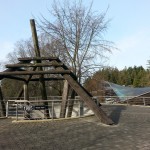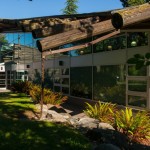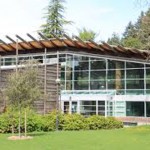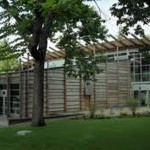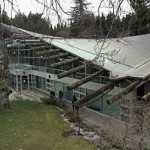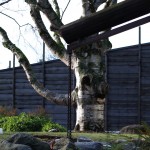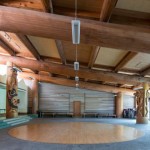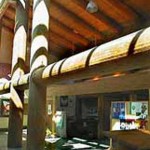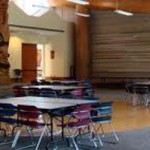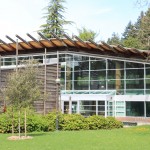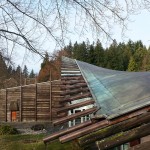The design of the First Nations Longhouse combines traditional regional wood construction techniques of the Coast Salish peoples with contemporary architectural forms. The structural framing, as well as most of the interior finishes and exterior cladding, is regionally-harvested western red cedar. The timber members were milled to a constant diameter and the detailing for the steel connections was prefabricated off-site to be later assembled on-site. Lateral bracing for this building structure is provided by light wood-framed shear walls constructed of hem-fir studs and sheathed in Douglas-fir plywood. The exterior cladding is ship-lap planks, naturally weathered to a warm grey color. The interior is mostly tongue & groove planks with exposed rafters and purlins, all naturally stained.
The massive physical appearance of the heavy timber structure inside the Great Hall draws the eye, while the roof of the Longhouse demonstrates the beauty and efficiency of timber as a structural material. This roof is shaped in a parabolic curve, intended to resemble the wing of a bird in flight. It is covered in copper, chosen for its ability to accommodate the complex shape and because it was a traditional material of value to the coastal First Nations people. Make sure you find a good vantage point to catch a good view of this structure’s beauty and versatility.
Make sure to visit all of the features of the building before moving on to the next stop.
![]() Uses of Wood in the Building
Uses of Wood in the Building
Continue to CIRS Building 
